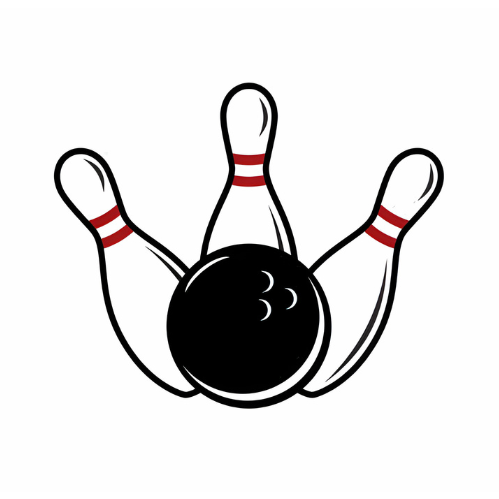Bowling boards are individual strips of synthetic or wooden material running the length of a bowling lane. These boards assist players in aiming and aligning their shots.
Bowling is a sport cherished by countless enthusiasts who revel in the challenge and precision it demands. Bowling boards play a crucial role in the game, acting as guides to help bowlers target their throws with greater accuracy. Each lane is comprised of 39 boards, typically numbered from right to left for a right-handed bowler.
Understanding the layout and function of these boards can significantly elevate a player’s game. Whether you are a seasoned pro aiming to perfect your strike or a casual player seeking to improve your score, knowledge of bowling boards is a valuable asset in this competitive and fun sport.

Credit: www.eslbuzz.com
The Essence Of Bowling Scores
Bowling scorecards can look complex at first glance. Each box you see represents your attempt in the frame. A strike is marked with an “X” and means you knocked down all ten pins with your first ball.
Scoring a spare, shown as a “/”, means you cleared the pins in two tries. If you see a “-“, that’s a miss with no pins hit. A spare or a strike leads to bonus points. They depend on your next throws.
Let’s not forget about a “F”, indicating a foul. This means you stepped over the line during your approach. Generally, scores range from 0 to 300, with 300 being a perfect game. To keep track, use the top row for your scores and the bottom for totals.
From Gutterballs To Strikes
Understanding bowling scores is key to improving your game. An open frame means you didn’t knock down all ten pins. Use these two rolls to tally your total pin count. A player scores a spare by knocking down all pins over two rolls. The score for a spare is ten plus the number of pins knocked down in the next roll. Striking, or knocking down all pins in one go, earns ten points. Plus, it adds the pins from the next two rolls to that frame’s score.
Knocking down pins with skill can lead to big points. Remember, spares and strikes can really boost your total. A bit of math and practice makes perfect. Each roll builds the road to victory, aiming for that perfect game.
Advanced Scoring Techniques
Achieving a turkey means bowling three consecutive strikes. This skill boosts your score swiftly. Practice is essential to consistently hit strikes. A steady approach, precise aiming, and controlled delivery lead to mastery.
Scoring a perfect game, or 300, demands 12 strikes in a row. This feat symbolizes the peak of bowling prowess. Being calm, focused, and precise with each roll is vital.
Digital Scoring Systems
The jump from manual scoring to automatic systems changed how we play bowling. Digital scoring systems track every throw and add up scores. This means no more pencils and papers.
Before, players or staff had to write down all scores. It took time and could cause mistakes. Now, sensors and cameras watch the pins. They send info to a computer.
So, games are faster and more fun. Everyone can see their scores on big screens. This tech makes it easy for new players to join the game. Kids and adults all can enjoy bowling together.
Improving Your Game With Score Analysis
Analyzing your bowling scores can sharply improve your game. Spotting common patterns from your past plays helps pinpoint areas for growth. Discovering a series of frequent mistakes can guide you to focus on particular skills. Recording each game’s details is crucial for this analysis.
Considering different bowling situations can lead to smart strategic adjustments. Knowing when to change your throw style based on past outcomes can help you plan better. Strategic changes can turn a common split into a spare. Kids, imagine aiming your ball differently to knock down all pins!
| Score Pattern | Problem Identified | Adjustment Strategy |
|---|---|---|
| Consistent gutter balls | Incorrect aim or release | Practice aiming and ball release techniques |
| Repeated 7-10 splits | Ball hitting too center | Adjust approach to hit pins at an angle |
| Low-scoring final frames | Possible fatigue or loss of focus | Work on stamina and concentration |
FAQ
What Is A Bowling Board?
A bowling board refers to the individual strips of synthetic or wooden material that make up a bowling lane. Measuring about 1. 06 inches wide, these 39 boards span the lane’s width, guiding players on ball placement and trajectory.
How Many Boards On A Bowling Lane?
A standard bowling lane features 39 boards across its width. Collectively, these boards provide reference points for bowlers to align their shots and achieve optimal pin action.
Why Are Bowling Boards Important?
Bowling boards are crucial as they offer bowlers markers to aim their shots, improving accuracy. They guide the ball’s path towards the pins and can affect the ball’s reaction depending on the board’s material.
Can You See Bowling Boards?
Yes, bowling boards are visible, especially on wooden lanes. Synthetic lanes might show less contrast between boards, but they’re often marked for better visibility, aiding bowlers in aligning their shots.
Conclusion
Exploring the world of bowling boards opens up many insights. We’ve delved into types, materials, and maintenance tips. Remember, the right board can significantly enhance your game. Embrace the knowledge, choose wisely, and watch your scores soar. Happy bowling!
